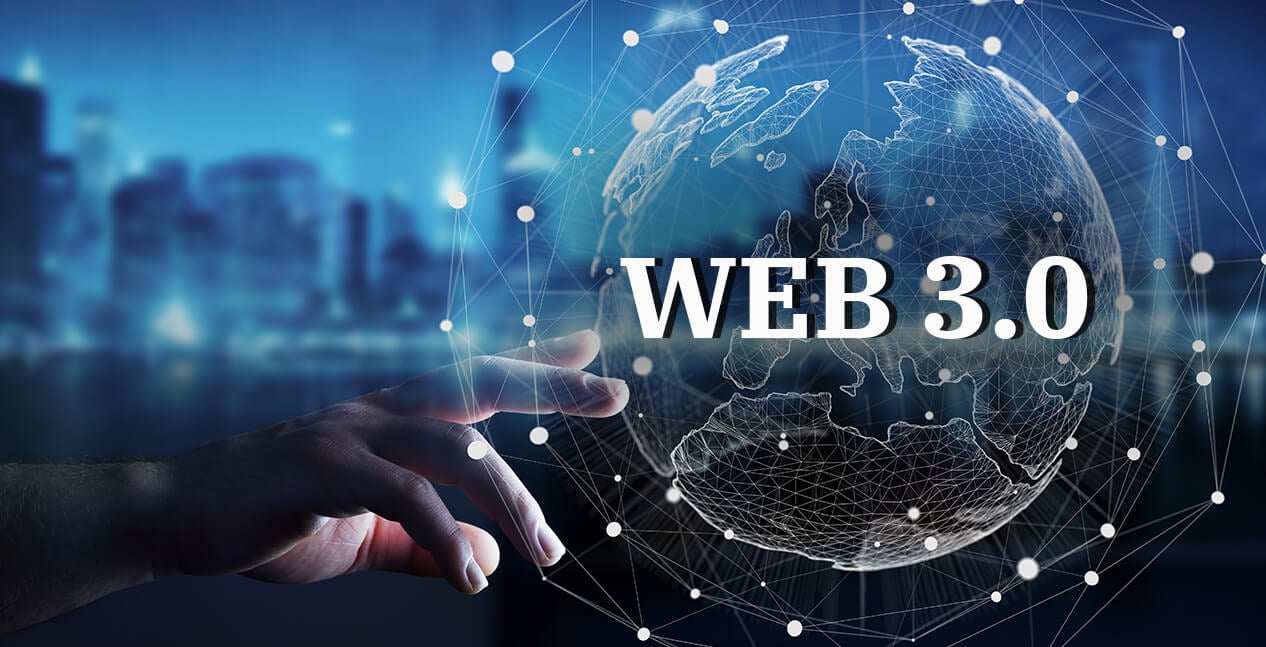Web 3.0: The next big thing tech world is counting on
 Laura Devis
Laura Devis
What is Web 3.0?
Web 3.0 is the next generation of Internet which grants websites and applications the ability to process data intelligently through Machine Learning (ML), Decentralised Ledger Technology, AI, etc. This blockchain technology-based World Wide Web was also termed as Semantic web because it is deemed to be intelligent and autonomous. Apparently, it will become a platform for the coming generations to have a secure and authentic repository of information that is immutable and accessible to all, eliminating cyber crimes. It will also provide complete ownership of the data and tokens shared on the internet by the user to ensure identity preservation.
Evolution of Web 3.0
Web 3.0 is said to have evolved from its basic versions - web 1.0 and web 2.0. Let’s deep dive into this phase evolution of the internet to understand why blockchain development services web 3.0 was a necessity.
Web 1.0
Web 1.0 is a Content Delivery Network (CDN), also known as a Read-only network defining the advent of the internet. This was the era between 1990-2004 when the web was static, and the users could only consume information given on the web pages hosted through web servers.
Unlike today, the web pages were hardly interactive since the content creation was still in its infant stage. Berners-Lee, the creator of the fundamental technologies of the web - HTTP, HTML, and URL precisely, had given shape to the first global network. Web 1.0 had in fact carved the way for future digital interactions. As the internet was gradually adopted by different industries, especially the banking sector, the need for interactive web became a necessity. The more people wanted to consume the information, the more they needed to produce and share too which paved the way for web 2.0.
Web 2.0
Web 2.0 was a major transition period in the web world between 2004 - 2012. Until now, the users were only consuming data that was at their disposal. However, as the web technologies evolved, user-generated data could be viewed by people around the world through the newly created social media webs. MySpace and Friendster were amongst the first startups that gave a platform to users to interact with each other. Advent of the mobile internet was also one of the key driving factors in this transition. With the introduction of mobile internet and the origin of big companies like Apple, Amazon, Facebook and Google, people could now share their experiences, businesses, etc with the world as well. This reformation led to people generating income from online services like delivery, product sale online, renting properties online and many such services. However, some industries like advertising, entertainment, etc were hit to their existential point. As web 2.0 gave users the leverage to share their data, most of the industry giants took over. They made users dependable to share their data worldwide through their platform and ownership of the shared data became a big issue. Identity theft is the most prominent reason web 3.0 was needed.
Web 3.0
Web 3.0 first emerged in 2006 and brought an evolution in the way the web has been utilised until now. This semantic web understands the context and concept of the data to deliver the most accurate results. Until now the big giants like Google and Microsoft had been consuming user data without compensating the people whose data is being shared online. However, with web 3.0, now people can claim ownership of the data or information they share. They will be able to sell their data and assets without losing privacy and ownership and earn out of it. Moreover, due to Artificial Intelligence and Machine Learning, humans will be able to communicate with machines just like they would communicate with other humans.
Web 1.0 vs Web 2.0 vs Web 3.0
Web 1.0 | Web 2.0 | Web 3.0 |
Read-only | Read-write | Read-write-execute |
Owning content | Sharing content | Consolidating content |
Home pages | Blogs and Wikipedias | Live streams |
Directories | Tagging | User behaviour |
Page Views | Cost per click | User engagement |
HTML/ Portals | XML/RSS | OWL/ RDF/ RDFS |
Web Forms | Web Applications | Smart Applications |
Company focus | Community focus | Individual focus |
Features of Web 3.0
1. Decentralisation
Decentralisation of data is the core feature of web 3.0. Earlier computers used to search for information by using HTTPs that stored the information at a single location, on a single server. However, Web 3.0 started using the process where information is searched by the user query/ content available anywhere on the net. Therefore, with the advent of web 3.0, data could be distributed and stored at multiple locations.
2. Semantic Web
Semantic web is an extension of the world-wide-web which enables computers to comprehend data by extracting relevant interpretations via data descriptors. According to the founder of Semantic Web, Tim Berners-Lee, this technology helps computers to analyse various types of content and deduce similarities between them to deliver the best possible results. Web-users will therefore have a similar experience like human conversing to each other.
3. Artificial Intelligence
Through semantic web concepts it is possible for computers to understand data just like humans. With the help of Machine learning, web 3.0 will be able to produce more accurate results. These skills will help many industries to generate research data quickly and produce positive results with every query.
Read more about What is Web 3.0
Subscribe to my newsletter
Read articles from Laura Devis directly inside your inbox. Subscribe to the newsletter, and don't miss out.
Written by
